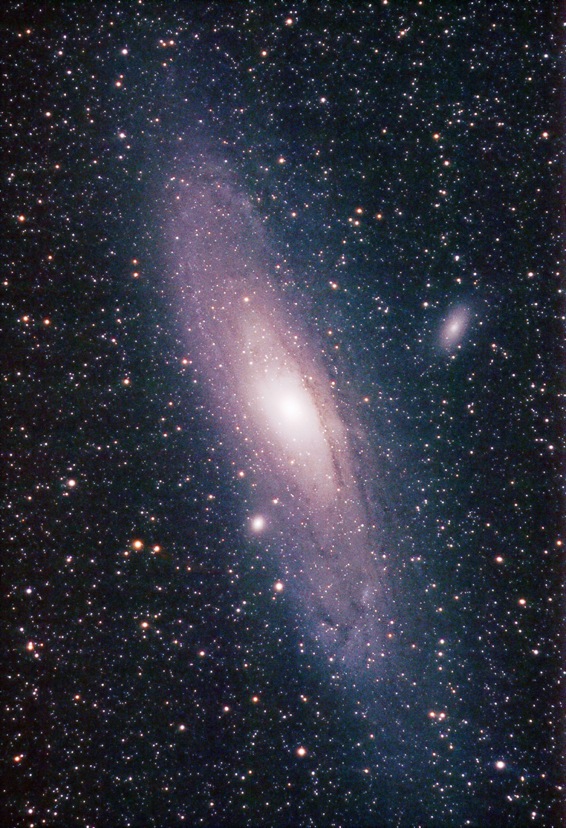
The Great Andromeda Galaxy is a spiral galaxy like our own (type Sb), but contains more stars, about 3 billion. At the distance of approx. 2.4 million light years it is a "neighbor", the next great spiral galaxy within our Local Group of galaxies. It is bright enough to be seen with the unaided eye from a semi-dark observing site.
From our point of view the Andromeda Galaxy is seen at a steep angle, only about 20 degrees from edge-on. The galaxy's spiral arms are therefore seen tightly wound and are not easily discernible, but they are marked by the dark dust lanes crossing the disk northwest of the galaxy's center. The diameter of M31 measures 3 degrees on the sky or 120.000 light years in space. Within the galaxy there are many nebulae and star clusters, the largest stellar association is designated NGC 206 and is located near the galaxy's southwestern edge.
In this photo, two different types of stellar populations can be differentiated. Young blue population I stars are seen in the outer arms, older population II stars are seen yellow-reddish colored in and around the central bulge of the galaxy.
M31 has 4 dwarf galaxy companions, two of them can be seen in this photograph. M32 is the compact dwarf exactly south of the great galaxy's center; NGC 205 is more extended and located northwest of M31.
 M31 - Great Andromeda Galaxy, Wright-Newtonian
photograph.
M31 - Great Andromeda Galaxy, Wright-Newtonian
photograph.
Exposure Data